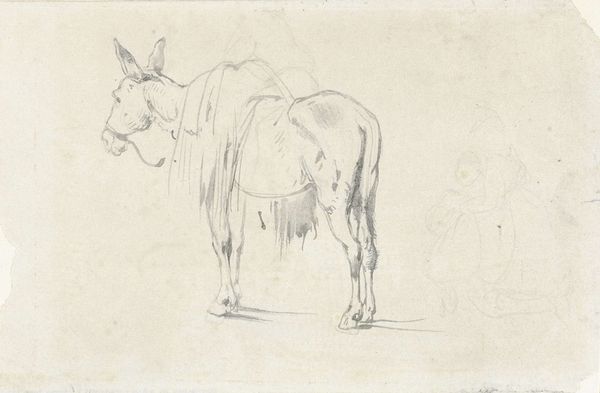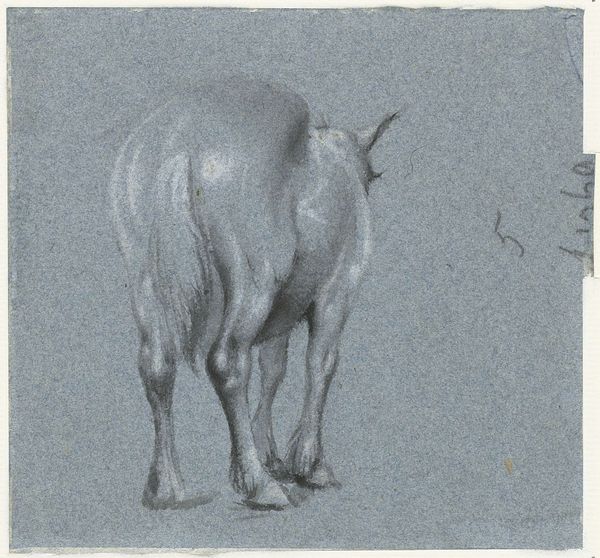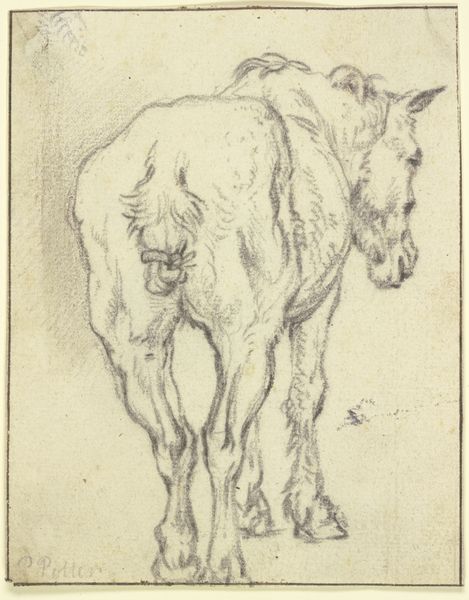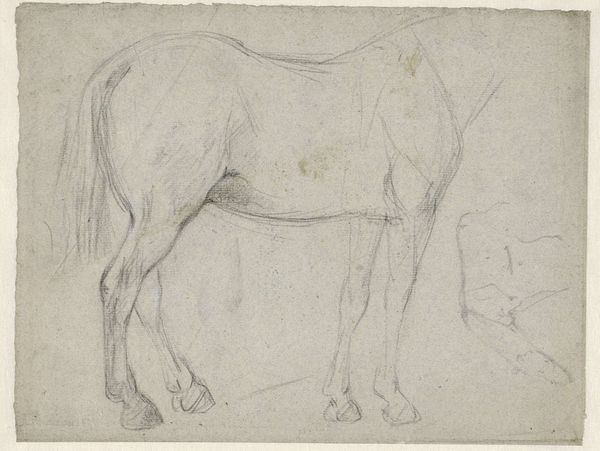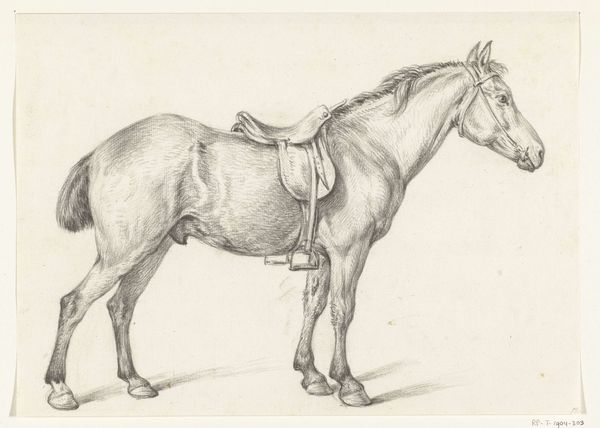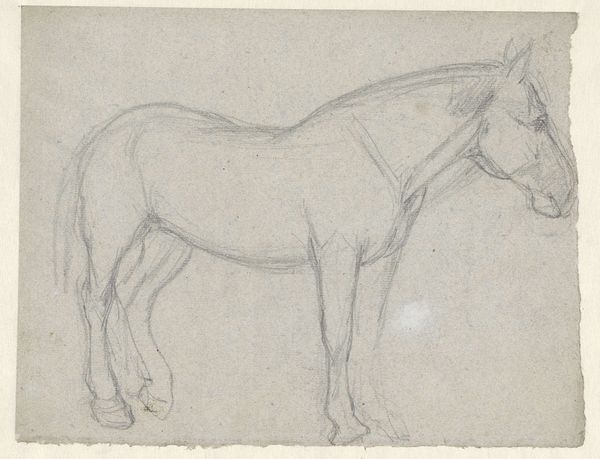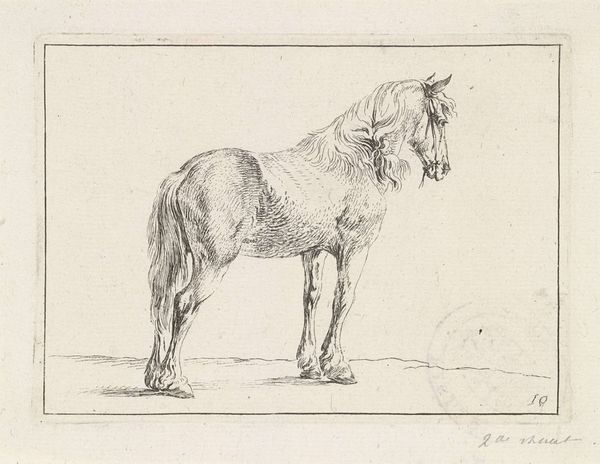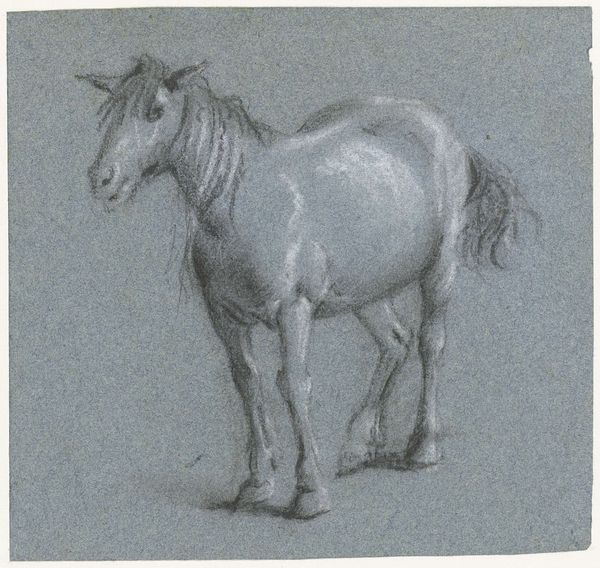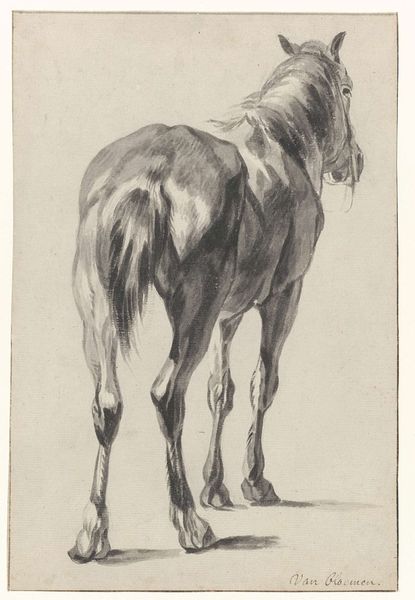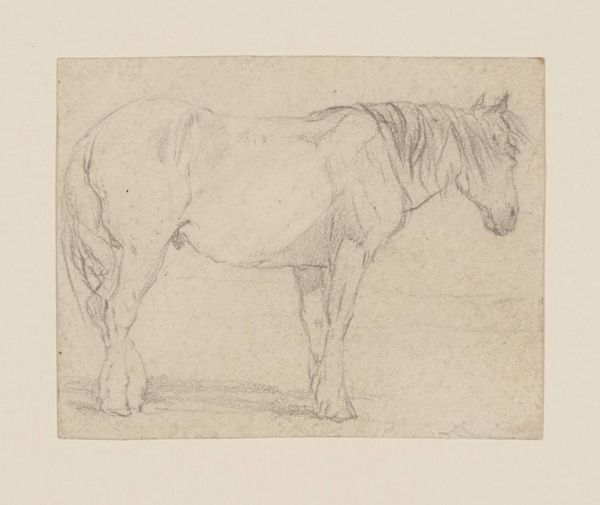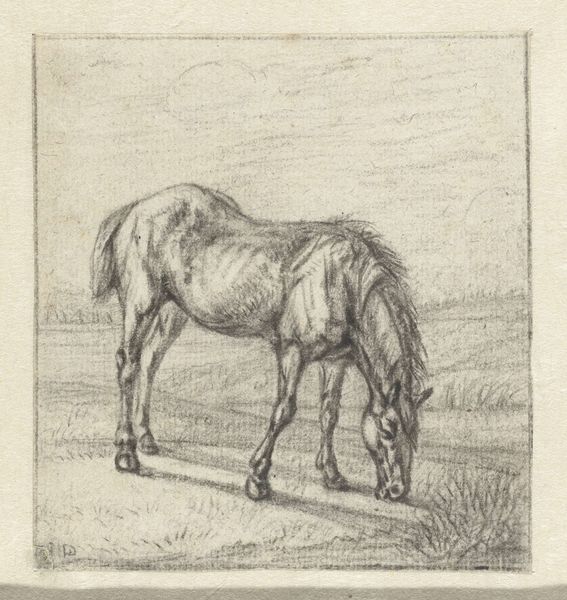
drawing, pencil
#
pencil drawn
#
drawing
#
amateur sketch
#
light pencil work
#
baroque
#
animal
#
shading to add clarity
#
pencil sketch
#
incomplete sketchy
#
landscape
#
form
#
pencil drawing
#
pencil
#
line
#
sketchbook drawing
#
pencil work
#
realism
#
initial sketch
Dimensions: height 146 mm, width 175 mm
Copyright: Rijks Museum: Open Domain
Editor: So, this is Moses ter Borch’s "Study of a Horse from Behind, Facing Right," a pencil drawing from around 1660, here at the Rijksmuseum. It’s striking how immediate it feels, almost like a snapshot. What catches your eye when you look at this? Curator: What strikes me immediately is the horse's pose – turned away, almost indifferent to the viewer. Horses, historically, are potent symbols of power, status, virility – think of equestrian portraits of rulers. Yet, here, Ter Borch gives us a very different perspective. It almost feels…vulnerable, wouldn’t you agree? The viewpoint directs us away from such displays. Editor: Vulnerable, yes! It's also a very particular view – a rear view. Does that angle itself have symbolic meaning? Curator: Absolutely! Think about it: The rear often signifies the end, the past. But it can also imply hidden potential, the direction something is heading. By choosing this perspective, Ter Borch is potentially making a comment on the traditional heroic representations of the animal. He makes us question what we assume of power and how we visualise memory. The animal isn’t facing forward ready for battle or parade; the line trails loosely behind it, no reins in sight. How do you think this contributes? Editor: It does move away from assumptions. It’s interesting how a simple shift in perspective can change the whole feeling of a classic symbol. Curator: Exactly. And it makes one think about the function of preparatory sketches, how such simple art forms work as memory aids for larger symbolic work. A quick study, not meant for show. This challenges us to look beyond conventional heroism and find meaning in more intimate, quotidian moments. Editor: It definitely gives me a new appreciation for the power of a simple sketch! Thanks. Curator: Indeed. It highlights how cultural symbols can be reinterpreted to reflect more personal or nuanced perspectives, it is useful to reflect how historical symbols transition through generations, too.
Comments
No comments
Be the first to comment and join the conversation on the ultimate creative platform.

